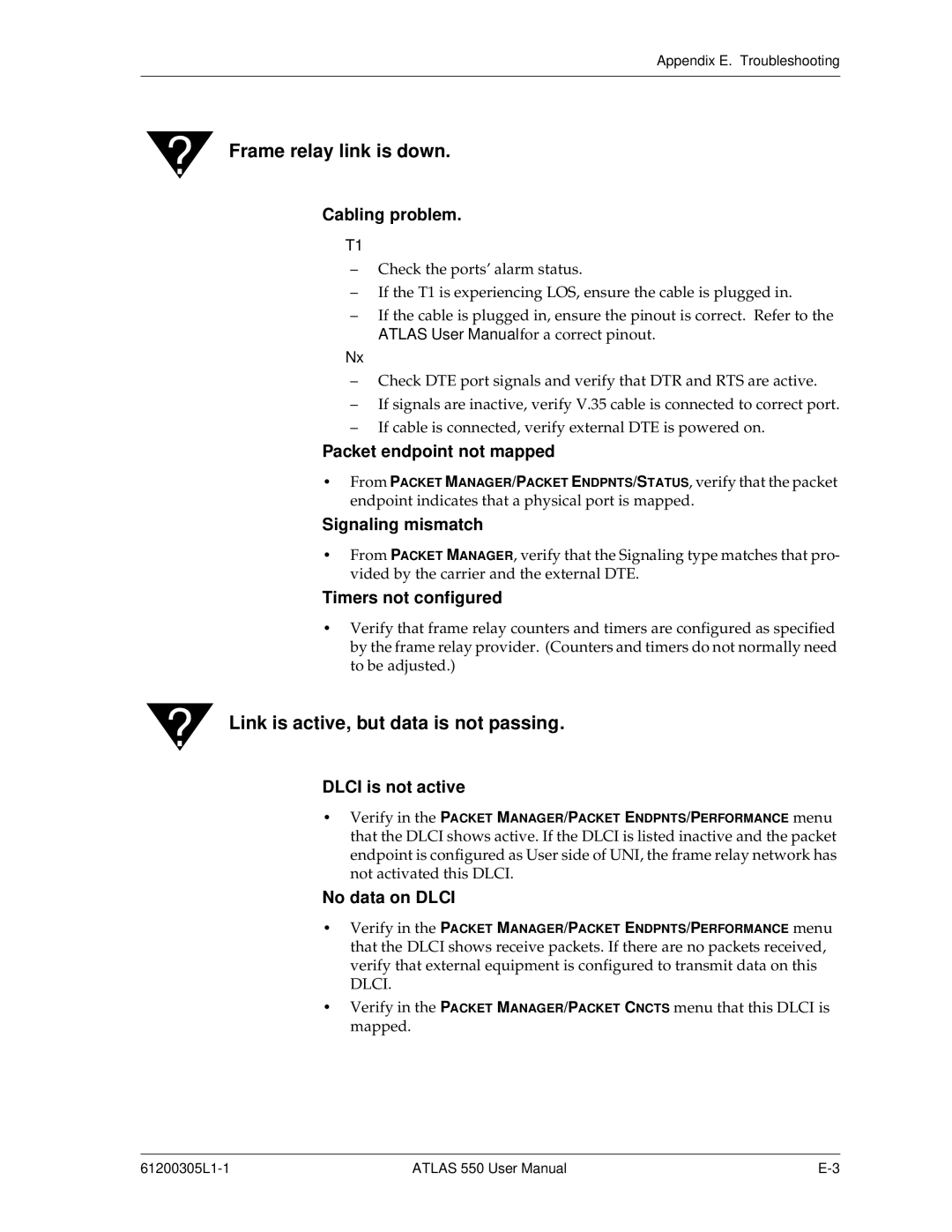
Appendix E. Troubleshooting
Frame relay link is down.
Cabling problem.
•T1
–Check the ports’ alarm status.
–If the T1 is experiencing LOS, ensure the cable is plugged in.
–If the cable is plugged in, ensure the pinout is correct. Refer to the ATLAS User Manual for a correct pinout.
•Nx
–Check DTE port signals and verify that DTR and RTS are active.
–If signals are inactive, verify V.35 cable is connected to correct port.
–If cable is connected, verify external DTE is powered on.
Packet endpoint not mapped
•From PACKET MANAGER/PACKET ENDPNTS/STATUS, verify that the packet
endpoint indicates that a physical port is mapped.
Signaling mismatch
•From PACKET MANAGER, verify that the Signaling type matches that pro- vided by the carrier and the external DTE.
Timers not configured
•Verify that frame relay counters and timers are configured as specified by the frame relay provider. (Counters and timers do not normally need to be adjusted.)
Link is active, but data is not passing.
DLCI is not active
•Verify in the PACKET MANAGER/PACKET ENDPNTS/PERFORMANCE menu
that the DLCI shows active. If the DLCI is listed inactive and the packet endpoint is configured as User side of UNI, the frame relay network has not activated this DLCI.
No data on DLCI
•Verify in the PACKET MANAGER/PACKET ENDPNTS/PERFORMANCE menu
that the DLCI shows receive packets. If there are no packets received, verify that external equipment is configured to transmit data on this DLCI.
•Verify in the PACKET MANAGER/PACKET CNCTS menu that this DLCI is mapped.
ATLAS 550 User Manual |
